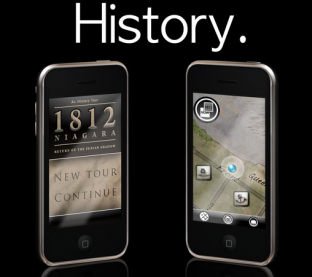2017/18 – DHN 4100 (en) / 4500 (fr): Projet de fin d’études en sciences humaines numériques
Dans ce cours vous développerez, avec en équipe de vos collègues, un prototype numérique qui répond à une question, ou résous un problème de votre choix. Votre prototype résidera sur un site Web, ou les membres du publique pourrons l’utilisé.
Durant la session d’automne, vous formerez une équipe de développement (7 étudiants maximums). Vous choisirez une question ou un problème, en partenariat avec une organisation (par exemple, un Département du Gouvernement du Canada, un musée, et une organisation à but non-lucratif. La question ou le problème dois être approuvé par les instructeurs. Vous définirez aussi un public cible pour votre prototype, et assembler un dossier du matériel lié au sujet.
Durant la session d’hiver, vous concevrez et construire et tester votre prototype. Vous compléterez la première version de votre prototype à la fin du février, et vous testerez votre prototype avec les membres de votre public en mars. À la dernière classe, vous présenterez votre prototype à vos collègues et invitées, démontrant comment une personne peux l’utiliser.
2011 – HUMA/HIST 5V71: Humanities Computing
What is “humanities computing”, also known as “digital humanities”? We will begin to answer this question by thinking about DH through definitions, theoretical problems and examples. Digital humanities is a noun that manifests as a verb: it is “digitizing”, “distant reading”, “mapping”, “building”, “modeling and simulating”, “playing and gaming”, “teaching” and “collaborating”. We will also begin to answer the question by thinking with digital humanities, exploring the ways in which computing can support our research agendas, and augment our research practices.
2009/10 (with John Bonnett) – Hist 5V70-5V79: History and Computing
The purpose of this course is to provide a theoretical and practical introduction to the computer’s past, present and potential future role as an analytical, expressive and pedagogical support for the discipline of history. In this course, you will be exposed to readings that describe established and emerging domains of research in history, the historical sciences and the digital humanities, domains such as quantitative computing, virtual heritage and digital textual analysis. You will also be introduced to readings that describe historians’ use of important applications, such as databases, GIS (Geographic Information Systems), virtual and augmented reality, and agent-based simulations. The course will also provide a hands-on project which will serve as a practical introduction to digital history, and serve as your final assignment for the course.
2011 – IASC 3V98: Twenty-first century Teaching and Learning with Technology
Emerging computer technologies are transforming our society; how might these support better teaching and learning in the university in general, and in the humanities in particular? In IASC 3V98, we will answer this question by researching computer technology for post-secondary education, and then developing recommendations that will be expressed in the form of mobile learning applications, written reports, PowerPoint presentations,Web sites, and film/video productions. All of the recommendations produced in this project-based course will be posted on the Web, as we create a conversation amongst faculty and students about the future role of technology at Brock.
2009/10 – IASC/HIST 3F90: Survey of Humanities Computing
How can we best use digital multimedia to express the humanities? In HIST/IASC 3F90 we will answer this question by:
- i. “thinking about” multimedia through definitions, histories, examples and theoretical problems;
- ii. “thinking with” multimedia, using computer technologies to explore and communicate ideas.
We will give special attention to the simulation/interactive game. According to one authority, simulations may be “the paradigmatic form of multimedia, or for that matter, the paradigmatic form of expression in the digital age.”

